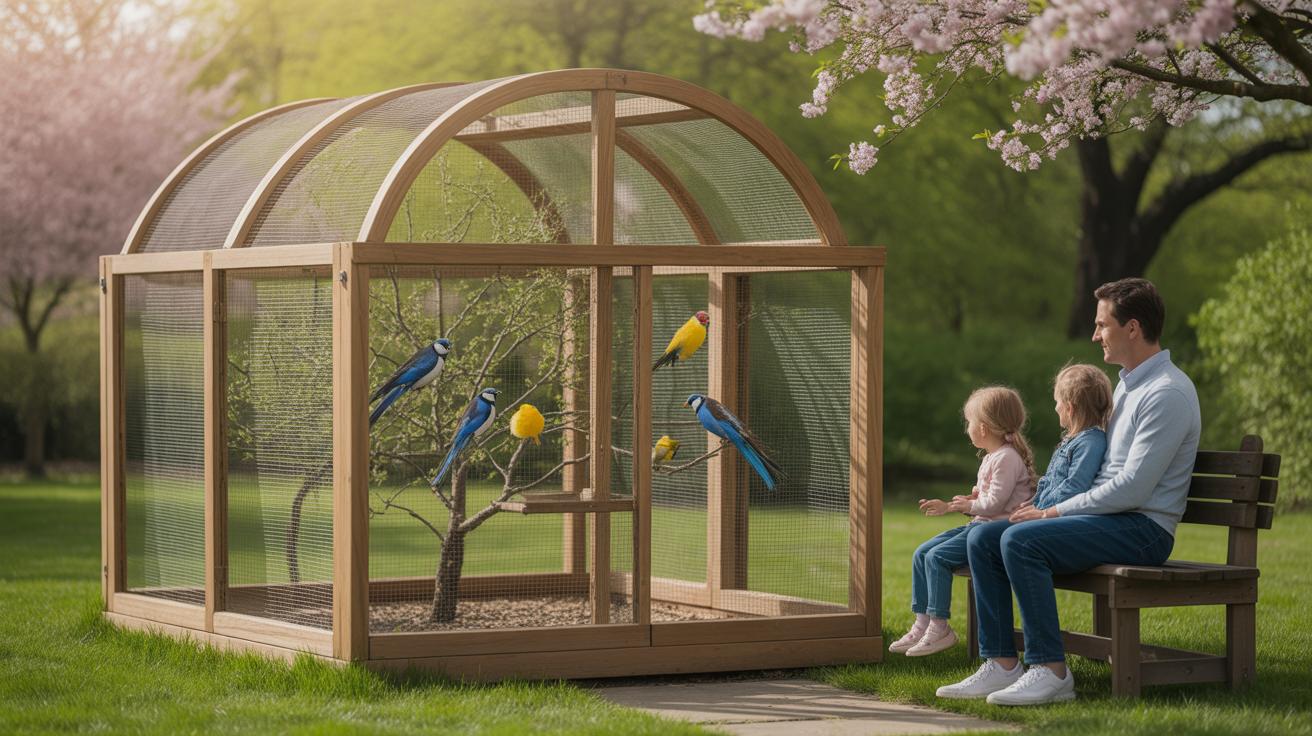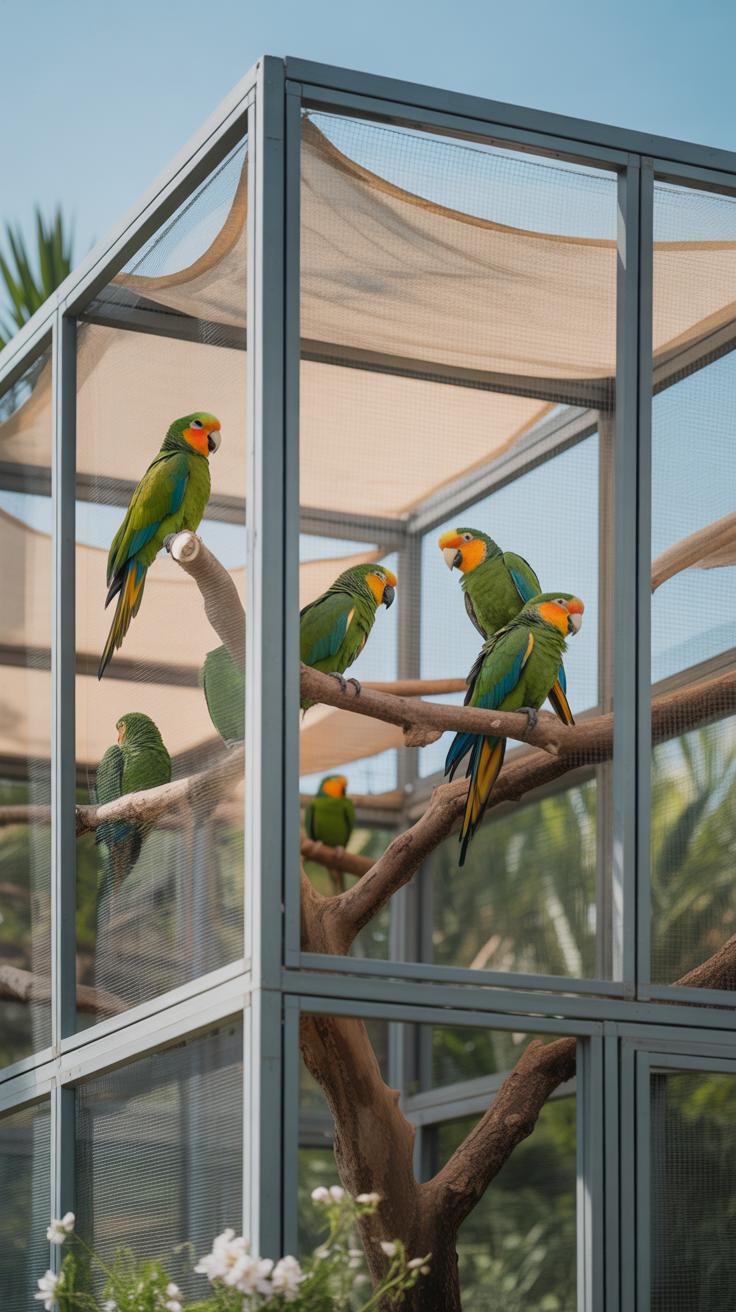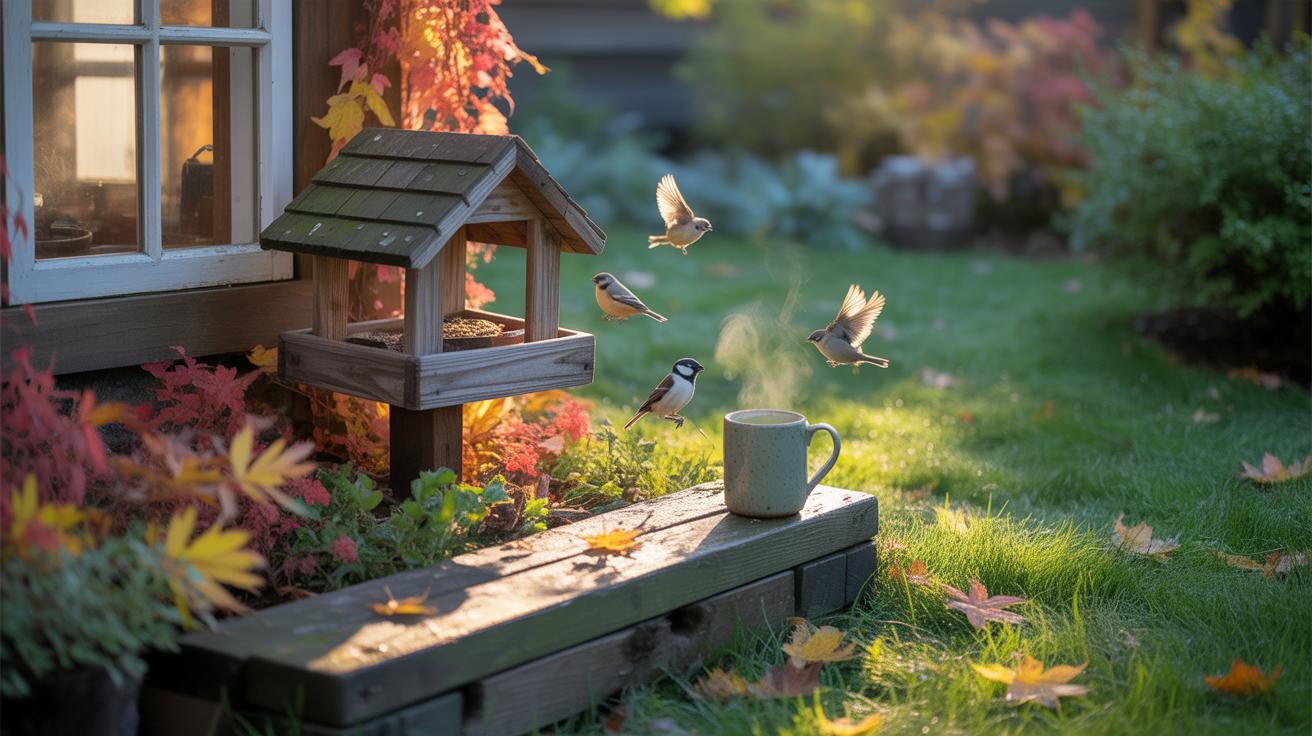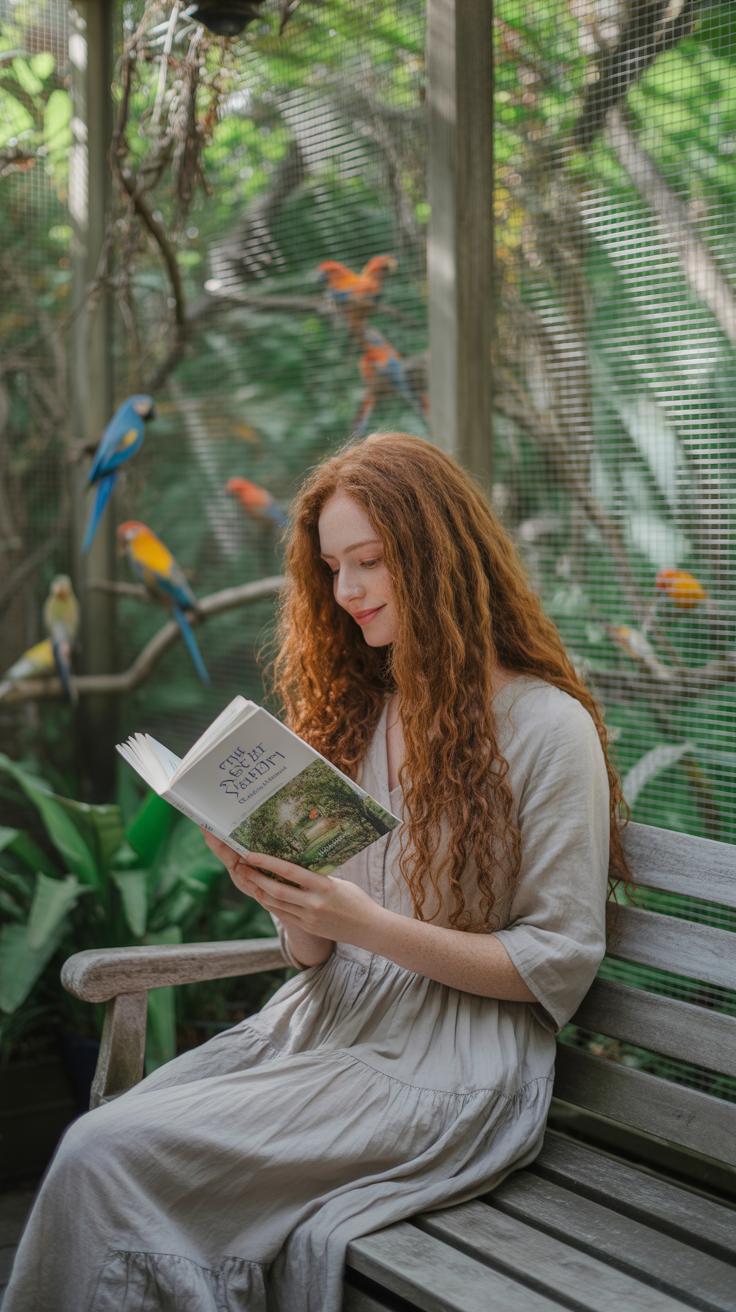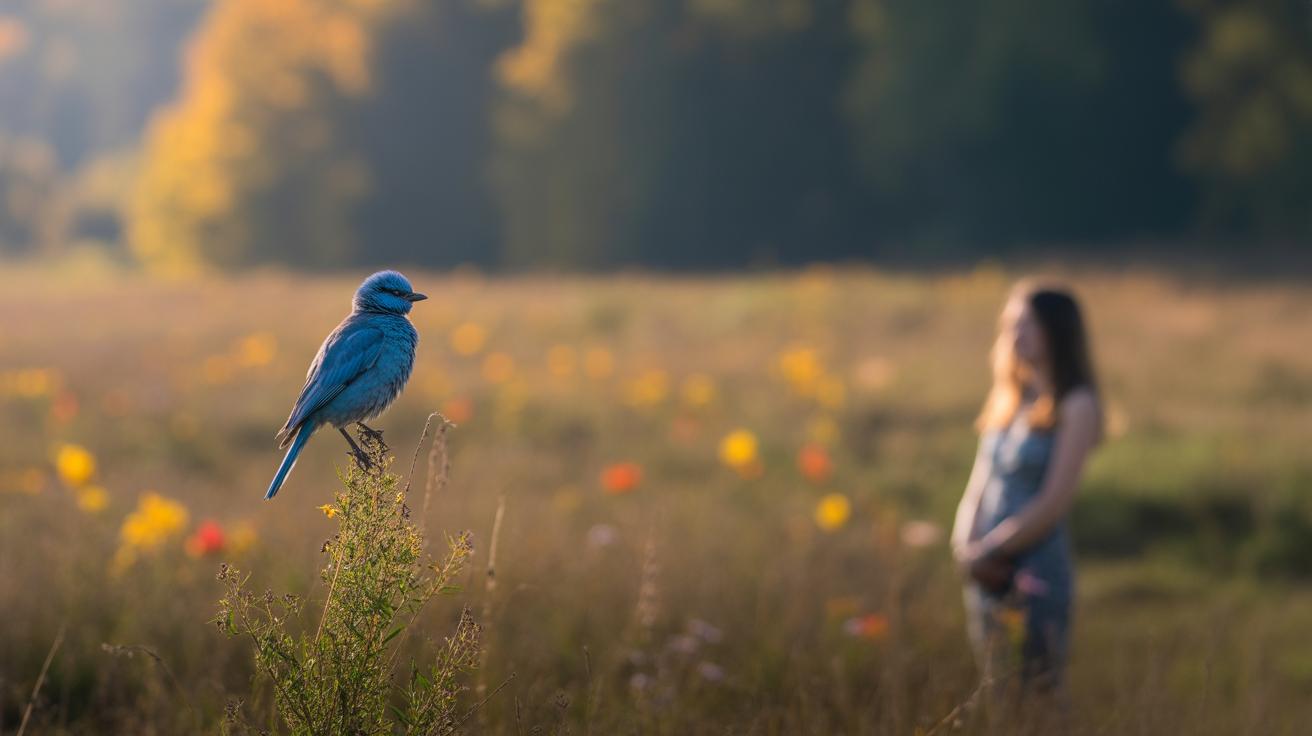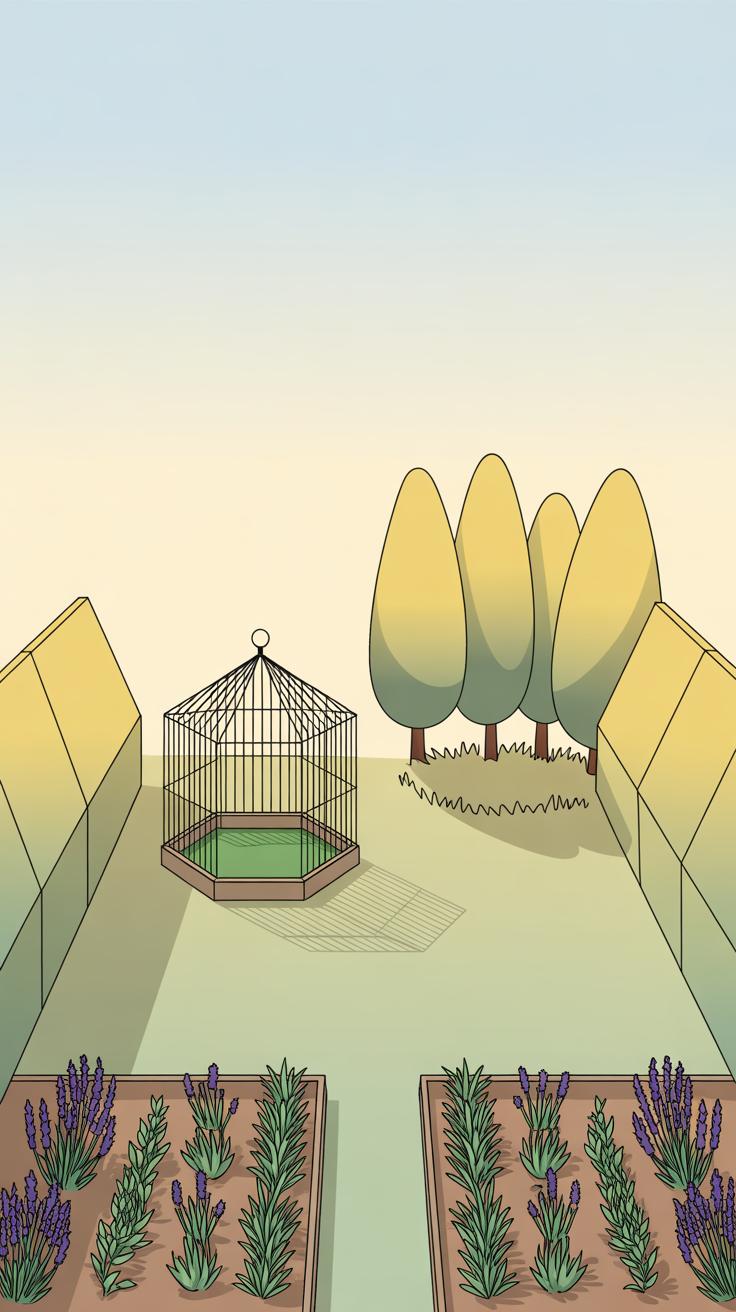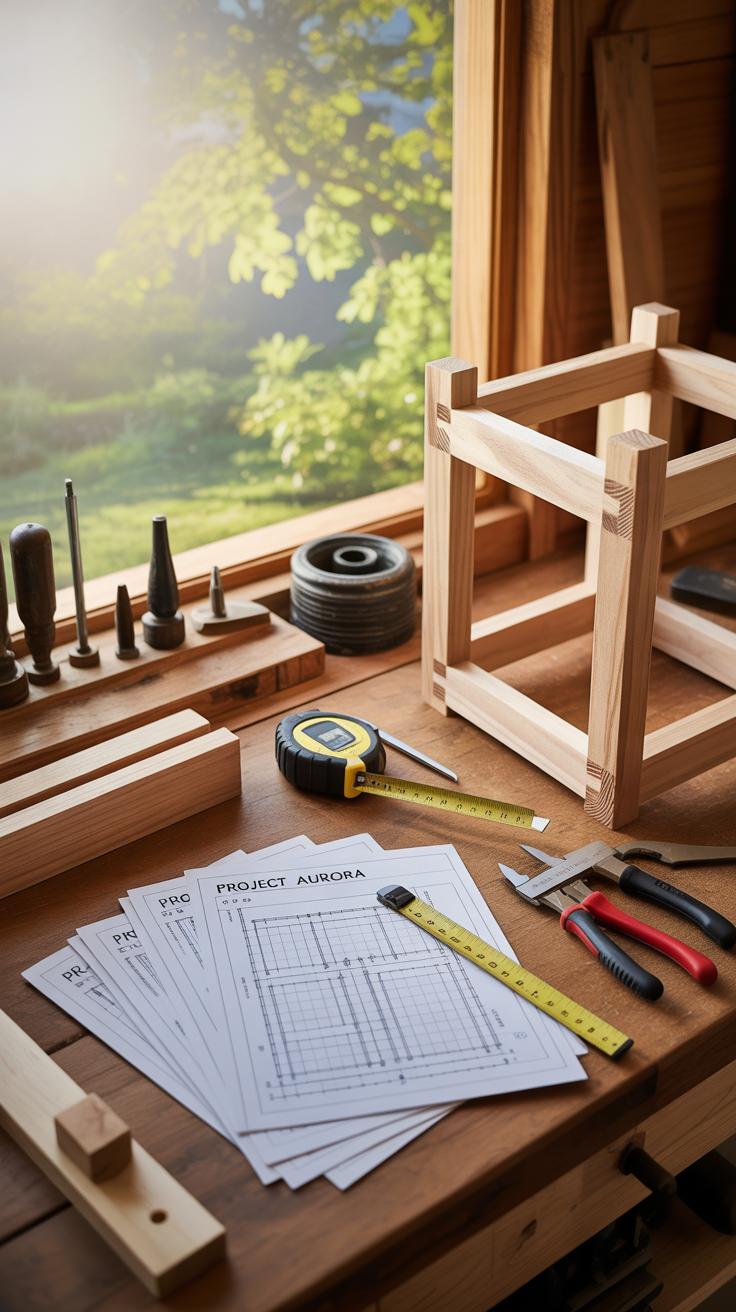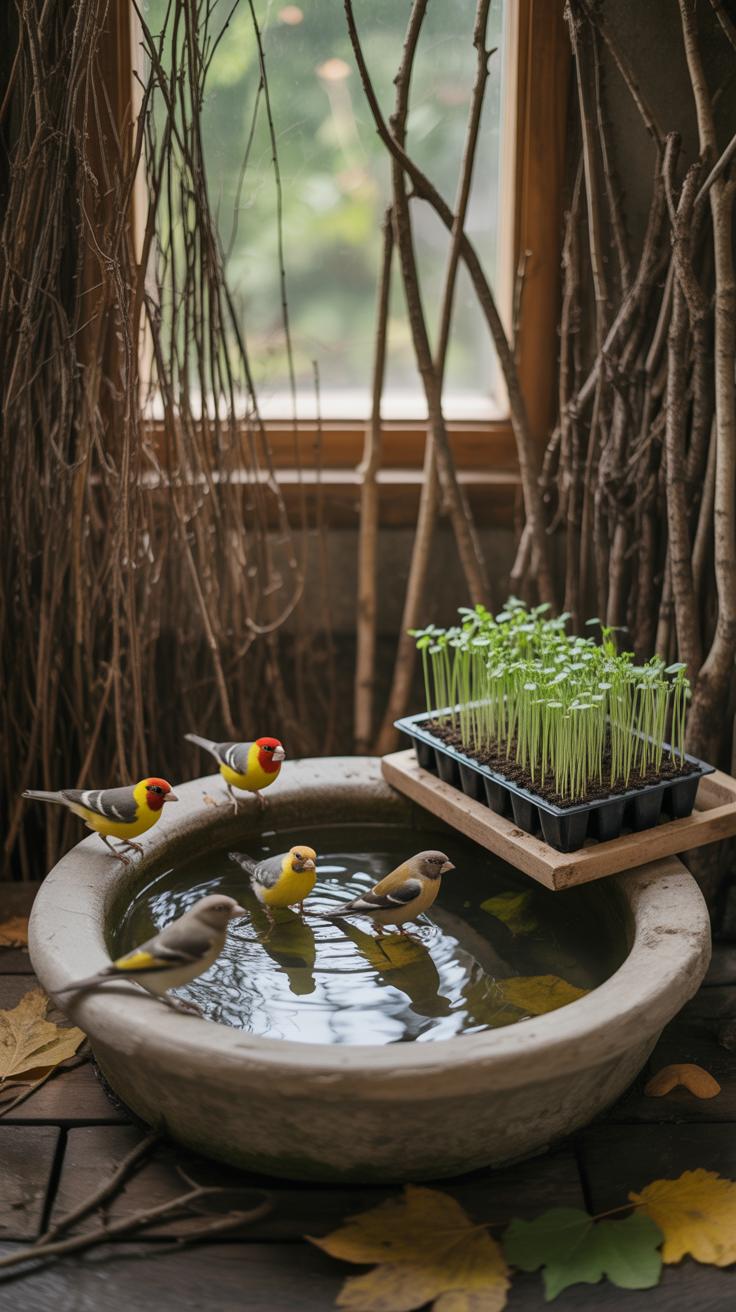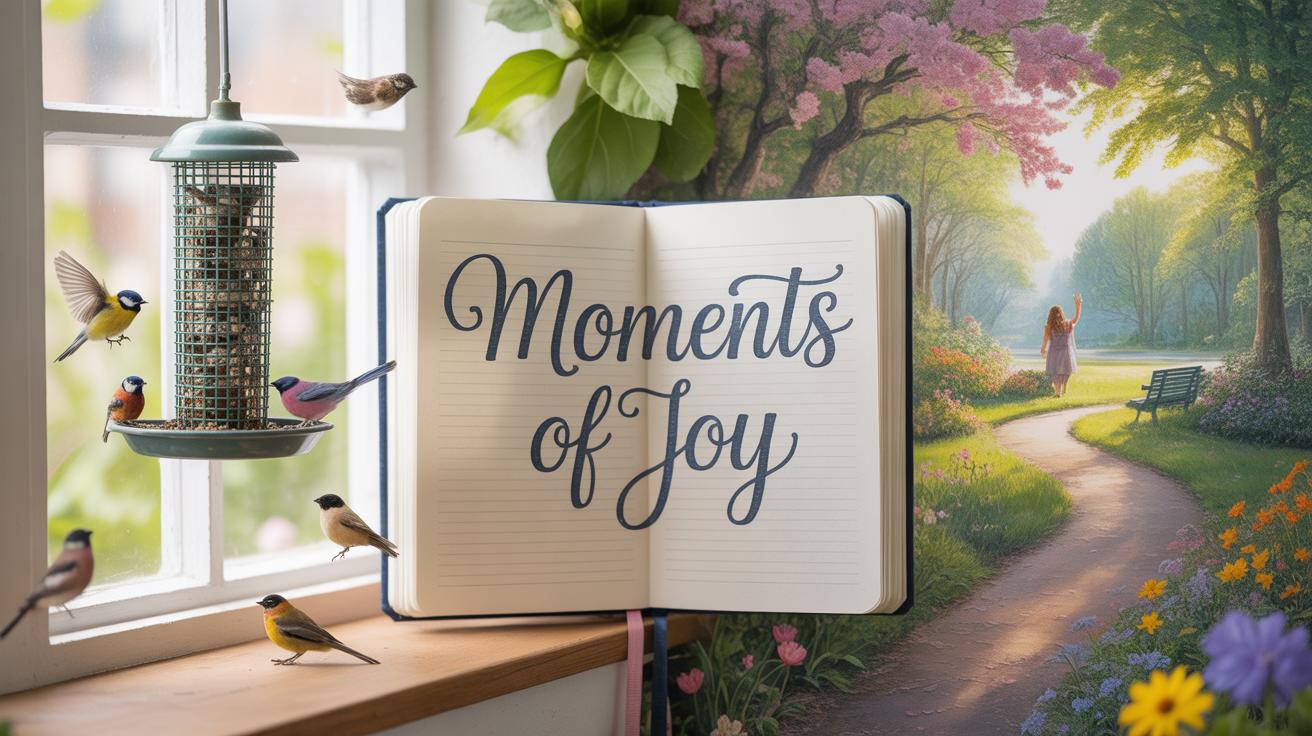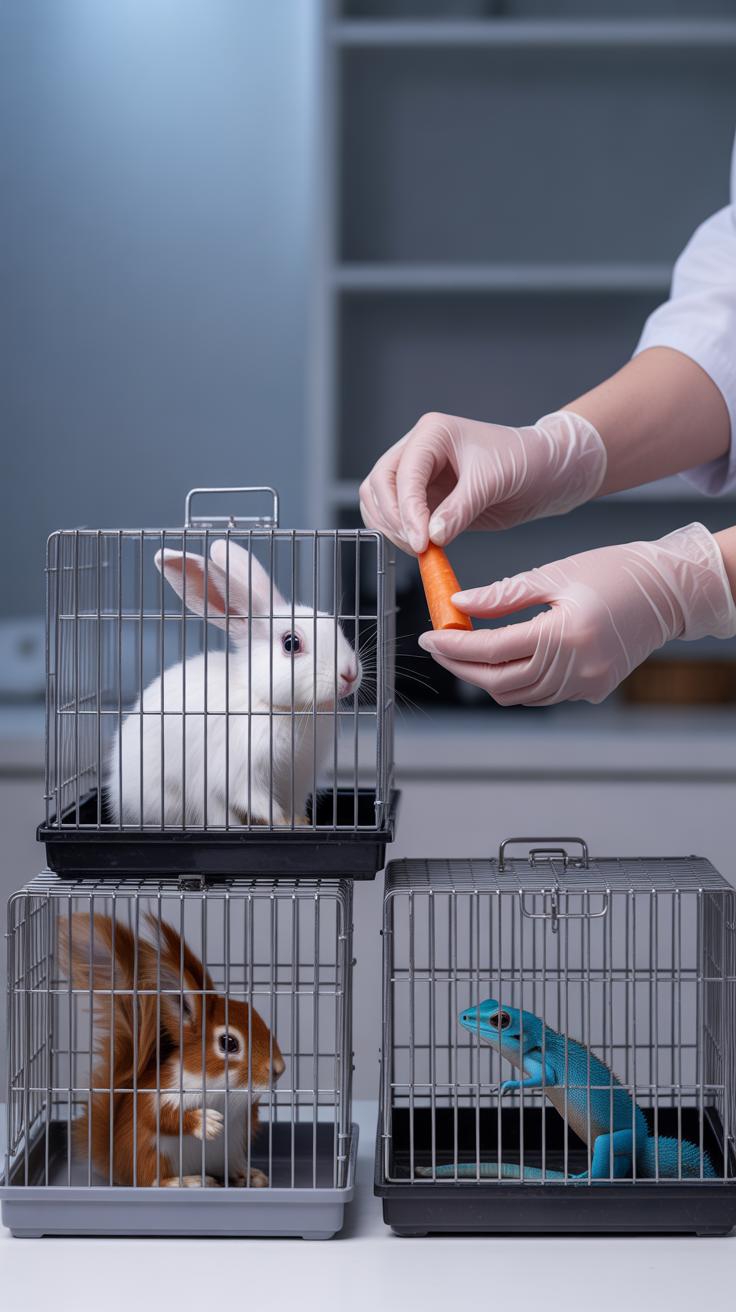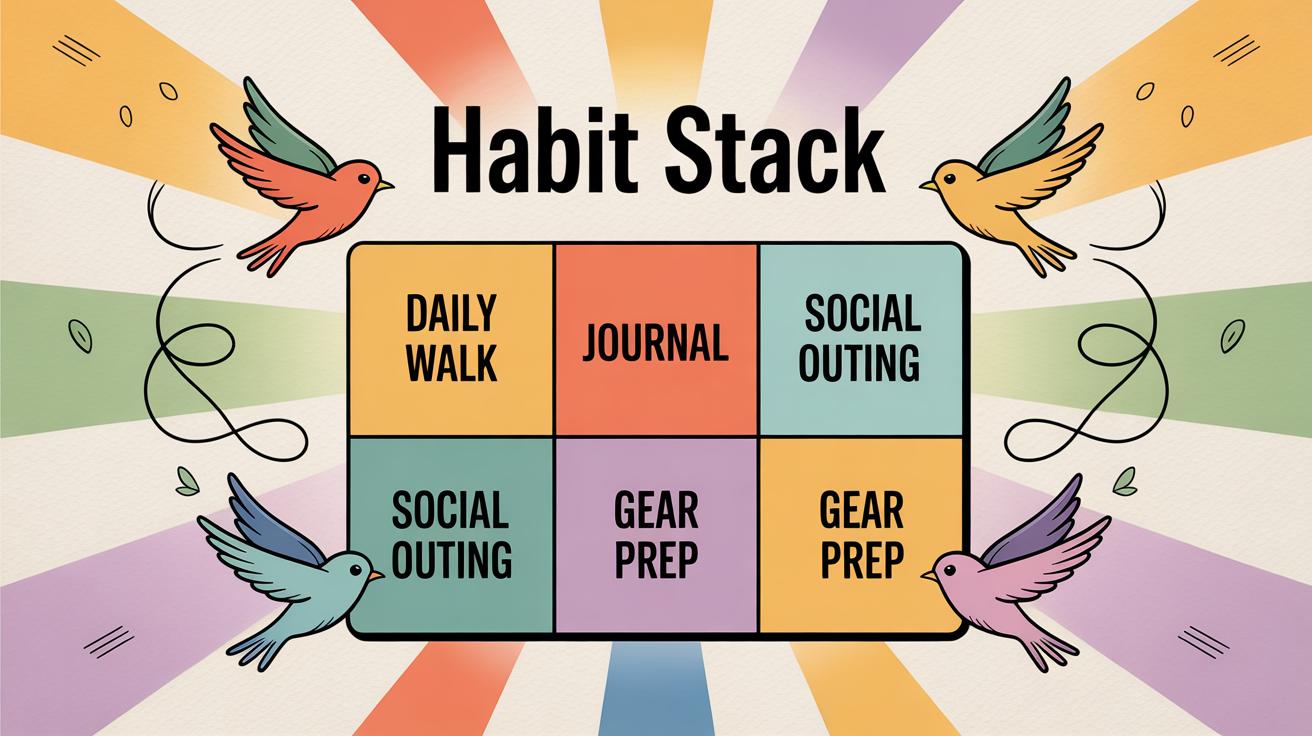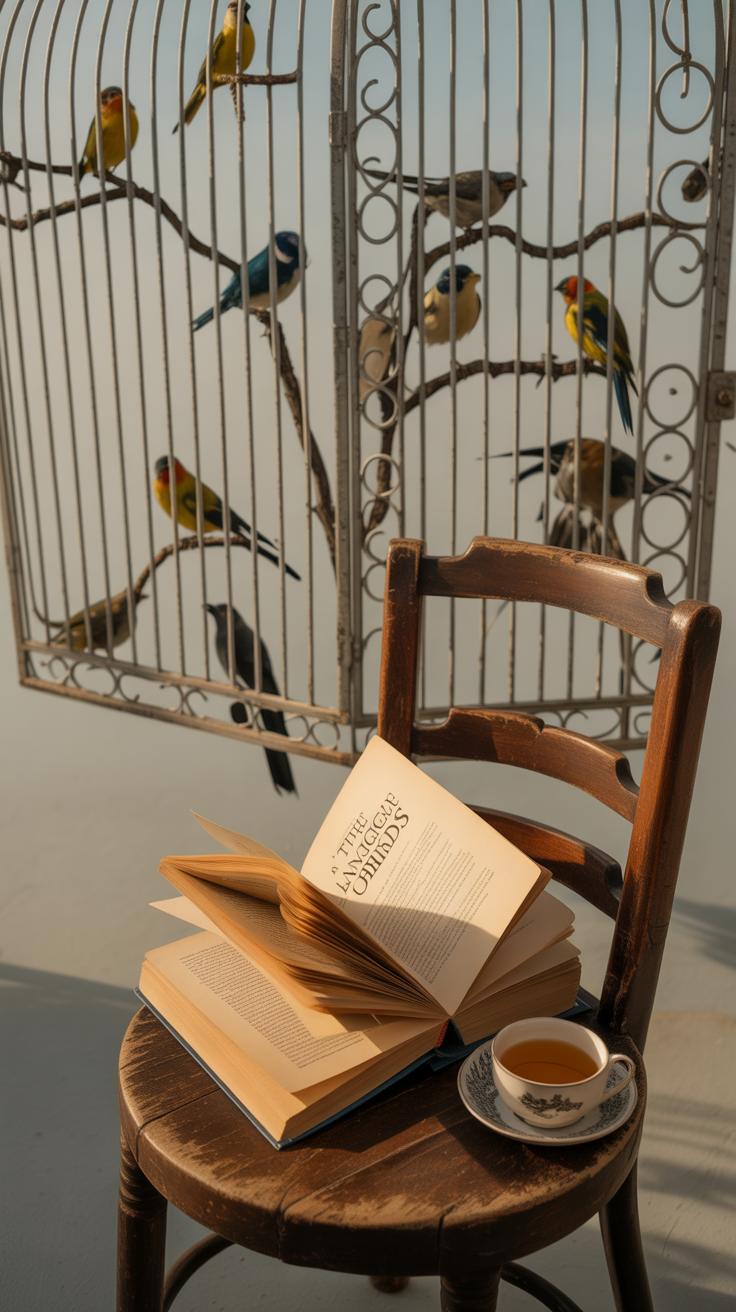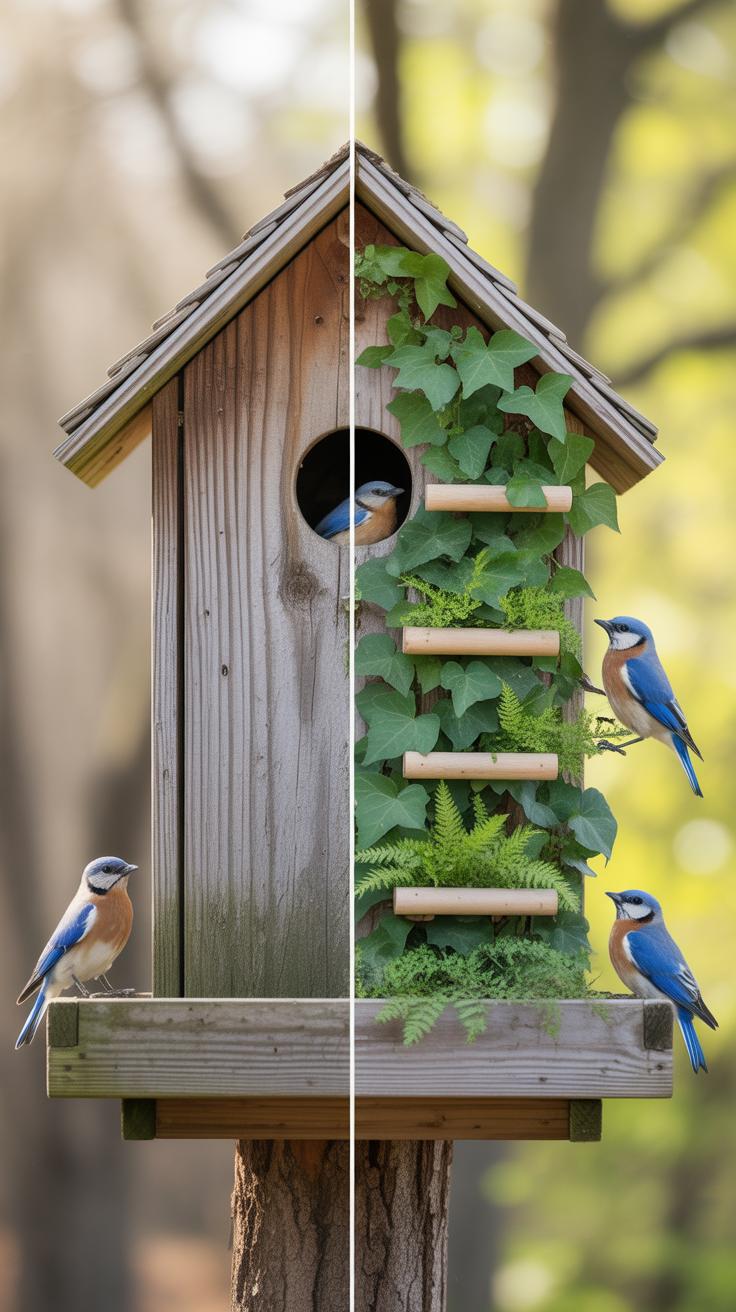Introduction
Building a bird aviary offers a unique way to bring nature closer to your daily life. This personal sanctuary for birds also becomes a peaceful spot for you to unwind and enjoy nature’s calming effects. A bird aviary creates a small ecosystem where you can watch birds fly freely and hear their songs anytime.
Setting up your aviary involves thoughtful planning and care for the birds. This article will guide you through the reasons to build one, how to design it, picking the right spot, and maintaining it. You will find practical ideas to turn your space into a living retreat that benefits both you and the birds.
Understanding What A Bird Aviary Is
A bird aviary is more than just a large cage. It’s a spacious enclosure designed to give birds room to fly, move around, and feel comfortable. Unlike the typical birdcage, which restricts movement to small areas, an aviary allows the birds to stretch their wings and engage in natural behaviors. You could imagine it as a mini ecosystem — a blend of open space and thoughtful design tailored for birds.
Inside an aviary, you’ll often find plants, leafy shrubs, and natural perches that create a habitat resembling what birds experience in the wild. These elements don’t just look nice; they help the birds feel at ease, reducing stress and encouraging more active, healthier lives. I’ve noticed when visiting aviaries, the birds seem calmer, almost like they’re more “at home” than they would be in a confined cage.
The Purpose Of A Bird Aviary
People build bird aviaries mainly to give birds a larger, more natural environment. Birds need space to fly—it’s part of how they stay healthy. An aviary meets this need better than any typical cage. It’s not just for the birds’ comfort, though. Watching birds fly freely brings a unique kind of enjoyment that a simple cage can’t offer.
When you create an aviary, you get to observe natural bird behaviors up close—whether it’s preening, flying from branch to branch, or just exploring. It also offers an interactive way to connect with nature without leaving your home. Some owners report that their aviaries become small retreats, places to unwind and forget the day’s busyness just by watching the birds.
How Aviaries Mimic Nature
Designing an aviary isn’t just about fences or space. The real magic lies in how it includes natural elements to resemble the bird’s habitat. Plants, bushes, and even small trees play a vital role. They offer shelter, places to perch, and stimulate exploration. Each natural feature creates a familiar environment that encourages behaviors like foraging or nesting.
For example, adding flowering plants can attract insects, offering birds the chance to hunt as they would in the wild. Rocks, water features, and varying terrain also enhance the stimulation. This setup provides more than just physical comfort—it improves the birds’ overall well-being. I sometimes wonder if the birds notice the difference; their energy and curiosity certainly suggest so.
Benefits Of Having A Bird Aviary At Home
Owning a bird aviary offers more than just a beautiful addition to your garden or patio. It creates a space where nature becomes part of your daily life, bringing moments of calm and quiet that are hard to find elsewhere. The simple act of watching birds move freely, hear their calls, and observe their behaviors can lift your spirits, especially when life feels a bit overwhelming.
You might notice that after spending even a few minutes by your aviary, your mood shifts. Stress levels drop—there’s a kind of natural rhythm in bird song and movement that feels soothing. Many people find that having this constant, gentle presence of wildlife helps them relax without needing much effort.
Beyond relaxation, an aviary can turn your home into a mini classroom. It’s a place where you can learn how birds behave, what they eat, how they interact. Even kids pick up little lessons about nature just by watching and asking questions. Over time, this curiosity can deepen, linking you more closely to the environment beyond your walls.
And there’s something else, too. An aviary encourages responsible care and respect for birds. By providing a habitat tailored to their needs, you’re supporting bird welfare in a way that goes beyond keeping a pet. You’re giving birds room to live naturally, which makes a real difference in their wellbeing—and perhaps in how you see the world around you.
So, what if you could combine daily relaxation, learning, and a small but meaningful contribution to wildlife all in one? Your own bird aviary might be just that place.
Choosing The Right Location For Your Aviary
Finding Good Sunlight And Shade
When choosing a spot for your aviary, sunlight plays a bigger role than you might first think. Birds need exposure to natural light for their health and mood, but too much direct sun can cause stress or overheating. Finding a balance between sun and shade is key. Ideally, the location should get gentle morning sunlight while offering shade during the hotter parts of the day.
Look for areas near trees or structures that cast partial shade. Yet, you don’t want the aviary plunged into full shade either—that can make the space damp or chilly. I once placed an aviary in full shade and noticed the birds seemed less active, possibly because it felt too cold or dark for them.
So, you want a spot that changes throughout the day—bright but not relentless.
Shelter From Harsh Weather
Wind and rain can make your birds uncomfortable, and worse, they can threaten the structural integrity of the aviary. It doesn’t have to be tucked against a wall or completely shielded, but choosing a place with some natural protection helps. A location near windbreaks like hedges, fences, or buildings can reduce strong gusts without making the air stagnant.
Rainfall is trickier. You want the aviary raised or positioned so water drains away easily, avoiding puddles or dampness inside. I remember once setting up an aviary too close to a slope where water pooled after storms; it led to a soggy mess and unhappy birds.
Consider how your local weather behaves—where do storms usually come from? Is there a direction the wind favors? Position your aviary accordingly. It’s about making the space safer without boxing in the birds.
Planning And Designing Your Aviary
Deciding on the right size for your aviary depends largely on the types and number of birds you plan to keep. Smaller birds like finches and canaries need less space individually, but they often thrive better in groups, so don’t underestimate how much room they’ll need to fly and move freely. Larger birds demand more space not only horizontally but vertically. For example, parrots benefit from higher enclosures where they can climb and flap their wings naturally.
Think about how many birds you want now, and maybe a few more in the future. It’s tempting to start small, but overcrowding can stress birds, and it’s tricky to expand later on.
When it comes to materials, wood gives a natural feel and can blend nicely into your garden, but it requires maintenance and isn’t always the safest if untreated. PVC is lightweight and easy to work with, yet it might not stand up well to weather or curious beaks over time. Metal frames—usually aluminum or galvanized steel—offer durability and better protection against predators but can heat up quickly in sunlight, which you might want to consider depending on your climate.
Wire mesh is another key element, and its gauge and spacing need to be just right to prevent escapes or injuries. Thinner wire risks bending or breaking, while thicker mesh might block light more than you’d like.
Choosing materials that balance safety, lifespan, and comfort can feel tricky. Sometimes you have to pick what suits your environment and budget best rather than what seems ideal.
Creating A Natural Habitat Inside The Aviary
Bringing the outdoors inside your aviary means choosing plants and natural elements that feel familiar to the birds you want to host. You might think any greenery works, but some plants actually pose risks or don’t provide much value. Picking the right flora turns your aviary into a lively, inviting space, encouraging birds to explore and stay comfortable.
Choosing Bird-Friendly Plants
Look for plants that are safe and offer shelter, food, or places to perch. Some popular picks include:
- Ficus benjamina – Its dense leaves provide great cover and a sense of security.
- Pothos – Tough, trailing vines that birds can hide among or nibble safely on.
- Spider plants – They’re hardy and create neat clumps, offering spots to rest nearby.
- Bamboo – Sturdy stalks mimic natural branches and sway gently with the breeze.
- Herbs like mint or basil – These add fragrance and sometimes interest birds nutritionally.
Not all plants are just for looks. Their leaves and flowers sometimes provide food or attract insects birds love. You might notice your birds favoring certain plants, which can be a nice little surprise.
Adding Natural Perches And Nests
Branches from local trees work great for natural perches, but try to gather wood that’s pesticide-free and firm enough to hold birds without snapping. Vary the thickness and orientation to keep things interesting. Some branches angled upward allow birds to grip comfortably, while horizontal ones create casual spots to rest or chat.
Don’t forget nesting spots, especially if you want birds to breed or feel more at home. You can place small wooden nest boxes or weave natural materials like raffia or dried grasses into corners. Some birds prefer open platforms, others sealed boxes—so having both might be useful if you’re unsure which species will settle.
You’ll find that over time, your aviary starts to feel less like a cage and more like a tiny forest nook—maybe that’s the goal anyway, right?
Selecting Birds For Your Aviary
Choosing the right birds for your aviary can be a bit tricky. You want species that suit the space you’ve created and match your care abilities. Size matters—a small aviary fits finches or budgerigars best, while larger parrots need more room and stronger enclosures. Temperament plays a huge role too. Some birds keep to themselves, while others are highly social or even territorial. Mixing a quiet species with a more aggressive one usually leads to stress for everyone.
Care needs vary widely between species. Certain birds require specialized diets, specific humidity levels, or more daily interaction than others. When I first started, I underestimated how much time some parrots demand. So, reflecting on your daily availability honestly helps avoid frustration down the line.
Matching Bird Species Together
Picking birds that get along is sometimes like matchmaking. You want to avoid pairing birds prone to fighting or overly dominant ones that bully the rest. Often, sticking with species that naturally form flocks or display similar social behavior eases tensions. For example, many finch species blend well, while certain parrots prefer to keep their distance.
Also, age and gender can make a difference. Male birds might quarrel, especially in breeding season, while young birds adapt better to newcomers. It’s a bit of a gamble—careful observation helps early detection of conflicts. You might notice subtle signs before a real fight breaks out, like chasing, vocal scolding, or feather plucking. Watching your birds closely feels necessary, but it also makes the experience more engaging, right?
Caring For Your Birds
Basic care is more than just feeding and cleaning. Diet must match species-specific needs—some require seeds, others fruits, vegetables, or even insects. Offering variety benefits their health and keeps them interested.
Regular health checks are key. Birds hide illness well, so look for subtle changes in behavior, droppings, or appetite. Sometimes a gentle handling session reveals lumps, weight loss, or other problems early.
Social interaction matters. Some birds live happily alone inside a busy aviary; others crave companionship and engagement daily. Talking to them, offering toys, or rearranging elements in the aviary can enrich their environment. I noticed my cockatiel cheering up visibly when I spent more time nearby. Birds don’t say much, but they respond to care in tiny, surprising ways.
Daily Maintenance And Care Of Your Aviary
Keeping your aviary clean and comfortable takes some daily effort. You’ll want to remove leftover food and droppings each day. This stops bacteria from building up and keeps the birds from getting sick. It’s not a huge job, but skipping it can quickly make the space less inviting—for both birds and humans.
Fresh water is crucial, so change it daily to avoid contamination. I’ve noticed that birds seem more lively when their water is crisp and clean. Make sure feeders are tidy and not clogged with old seeds or fruit. Sometimes little messes sneak into corners; a quick wipe-down helps a lot.
Cleaning Routine
The deeper cleaning depends on your setup, but generally, aim for a thorough scrub of perches, floors, and walls at least once a week. Use mild, bird-safe cleaners or just warm water and vinegar. Strong chemicals might seem like a shortcut, but they can irritate your birds’ respiratory system.
Cage liners or substrate backgrounds should be replaced regularly. Wet or soiled materials can quickly become harmful. I try to check on these every few days—wait too long, and it’s harder to catch the build-up before it gets out of hand. It’s a bit repetitive, yes, but necessary.
Checking Bird Health
Daily observation is a key part of caring for your birds. Watch for subtle signs like plumped feathers, unusual quietness, or lack of appetite. Sometimes illness shows quietly at first, and catching it early might make all the difference. One day, I noticed one of my birds was less interested in its favorite treat—that small change prompted a quick vet visit, which helped a lot.
Pay attention to behavior changes and breathing patterns. If a bird looks lethargic or is sitting with fluffed feathers more than usual, something might be off. You don’t need to be a bird doctor to notice; just trust your instincts and observe frequently. What you see in the morning might not be the same in the afternoon, so keep an eye through the day if you can.
Enjoying Your Aviary For Everyday Relaxation
Creating A Peaceful Spot
Designing a quiet corner near your aviary can really change how you experience it. Think about a comfortable chair or a bench placed where you have a clear view of the birds’ daily activities. Maybe add a small table for your morning coffee or a book. Sometimes I find that a simple foldable chair is enough—portable, so I can move it around based on the light or bird behavior. Plants nearby can help soften the space and bring you even closer to nature. You don’t need a fancy setup; often, just a spot where you feel cozy and undisturbed works best. Does natural light hit that spot during the morning? If so, you might find it easier to stick around longer.
Using The Aviary To Reduce Stress
Spending time near your aviary is surprisingly calming. Watching birds can slow your thoughts—even if only for a few minutes. Their moves and calls create a kind of natural rhythm that helps ease tension. Studies suggest attention to wildlife lowers cortisol levels. Still, it’s not always seamless. Some days you might feel restless or distracted. That’s fine. Just being there, even without intense focus, can do something subtle for your overall mood. Try sitting silently for a few minutes, listening to their songs—it might feel strange at first but can gradually ground you. Do you notice how your breathing changes? Sometimes it’s slow and smooth; other times, more irregular, yet the act itself feels like a brief escape.
Expanding And Improving Your Aviary Over Time
As you spend more time with your aviary, you might find yourself wanting to tweak and build on what you already have. Maybe you’ve noticed a spot that could use a little shade, or perhaps you’re curious about introducing a gentle water feature to add some soothing sounds. A small fountain or birdbath not only pleases the eye but encourages birds to bathe and drink, creating a livelier atmosphere.
Adding a few more plants can be surprisingly rewarding too. Think about plants that attract insects for the birds to snack on or provide natural shelter. Over time, these additions can help recreate a more natural environment, making your space feel less staged and more genuinely alive.
When it comes to welcoming new birds, patience is key. Introducing newcomers bit by bit, starting with keeping them in separate enclosures nearby, allows the existing birds to get used to new scents and sounds without feeling threatened. It’s tricky balancing personalities—some species are just easier to get along with, and others, well, they need more space and time.
Have you ever paused to watch how your birds interact when you introduce a new resident? It’s subtle but fascinating. Sometimes, they show curiosity and acceptance quickly; other times, it’s a slow, cautious process. Each aviary is different, and you’ll probably fine-tune your approach as you learn what works best in your own space.
Conclusions
Building a bird aviary adds value to your outdoor space by creating a serene environment filled with natural sights and sounds. It invites you to slow down and enjoy simple pleasures as birds bring life and movement to your garden or yard. Your aviary becomes a daily nature therapy spot that refreshes your mind.
By following the steps to design, build, and maintain your aviary, you will create a lasting habitat that supports birds and your well-being. Take the time to observe and care for your flying visitors. Your connection with nature will deepen, bringing benefits to your everyday life.

